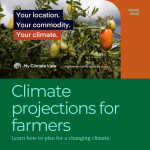Shaping Drought Resilience Strategies in Northern Australia: A Glimpse into the Northern Hub Workshops
In its commitment to enhancing drought resilience in Northern Australia, the Northern Hub recently conducted online workshops as part of the Hub 2.0 consultation process. Currently focusing on five tentative pillars – First Nations, Human Capacity, Resilient Landscapes, Natural Capital, and Preparation & Planning – these sessions brought together a diverse group of stakeholders, including industry experts, researchers, and producers. It’s important to note that these pillars are initial concepts, drawn from the Hub’s experience, and are open to evolution based on stakeholder feedback.
Pillar 1: First Nations
A key consideration for the Northern Hub is the future engagement with First Nations communities. The workshops highlighted plans to establish meaningful connections with Aboriginal people, integrating their knowledge in areas like climate resilience and land management. This pillar remains open for further shaping through direct consultations with Indigenous stakeholders.
Pillar 2: Human Capacity
Identified as crucial in drought preparedness, human capacity encompasses skilled extension staff, landscape literacy, and digital literacy among producers. This pillar emphasizes the development of local talent and leadership and is subject to refinement based on stakeholder input.
Pillar 3: Resilient Landscapes
The initial discussions around resilient landscapes focused on sustainable land management practices. The workshops stressed the importance of long-term project continuity and land type mapping, with the understanding that stakeholder feedback may lead to further adjustments in this area.
Pillar 4: Natural Capital
Exploring natural capital, particularly biodiversity and soil carbon, was another focal point. The potential of remote sensing for land assessments was discussed, with the caveat that this pillar will be shaped further by stakeholder suggestions.
Pillar 5: Preparation & Planning
Risk identification and contingency planning form this initial pillar. Financial literacy and the integration of land management with economics were highlighted, with an openness to stakeholder-driven changes.
Conclusion
The Northern Hub’s workshops represent the beginning of a dynamic consultation process. While the current pillars reflect the Hub’s initial perspectives, they are not set in stone and will be refined through ongoing stakeholder engagement, ensuring that the strategies developed are truly representative of the diverse needs and expertise within the Northern Australian community.


